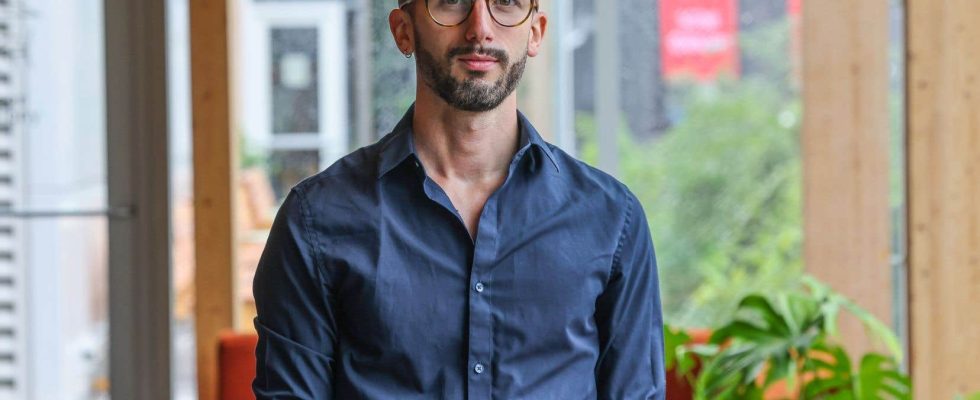This summer, The duty takes you on the side roads of university life. A proposal that is both scholarly and intimate, to be picked up like a postcard. Today, Kevin Papin reflects on the potential of virtual reality simulations for learning French in concrete situations.
Often instrumentalized in political discourse, immigration has caused a lot of ink to flow in Quebec. It is not uncommon to see immigrants being associated with the risk of the decline of French, especially in Montreal. However, Quebec enjoys great latitude in the selection of candidates for economic immigration, the majority of whom settle in the Quebec metropolis, according to ministerial data. With this privilege comes the responsibility for their linguistic integration.
To do this, Quebec can count on the hard work of francization teachers. Based on the Ministerial Study Program, they prepare newcomers to carry out various daily tasks in French, such as joining a neighborhood association, interacting with employees in stores, etc.
However, in the case of Montreal, the sociolinguistic reality often complicates the experience of immigrants when trying to communicate in French. Although they want to speak to Montrealers in French, newcomers who begin francization must face the Montreal switch, a form of code-switching that pushes their French-speaking interlocutors to answer them in English when they notice a foreign accent in their speech.
This phenomenon, even if it comes from a desire to facilitate communication, is not without creating language anxiety among these learners of French: “ I spoke in French and the person replied to me in English. Is my French that bad? confided to me during a study a bewildered learner. Research also confirms that this type of linguistic experience has a negative impact on the will to communicate, i.e. the desire to use the target language (here, French) when the opportunity arises. .
French learners generally do not have linguistic support during their interactions in natural context, since a teacher cannot follow all his learners in their communication experiences outside the classroom. So few people imagine the challenges experienced by a newcomer who has difficulty carrying out routine interactions in French, such as ordering a coffee.
Having the vocabulary learned in class is one thing, but when “trick” questions arise such as “what size? or “regular milk or oat milk?” », language anxiety can quickly get the better of the desire to continue the interaction in French. Using English then becomes the fallback solution, which can become a habit.
Leaving the class
So how can we better support immigrants in their attempts to communicate in French outside the classroom in Montreal? As a researcher in language didactics, I wanted to think about ways to strengthen the bridge between the learning done inside and outside the classroom, in order to prepare learners for oral communication in their environment. Montrealers and thus strengthen their desire to communicate in French.
This led me to design immersive virtual reality simulations based on 360 degree videos shot in Montreal. Hosted on the ImmerseMe platform, these online simulations virtually place learners in communication situations that are as close as possible to the sociolinguistic reality of Montreal (Montreal switch, varieties of French, etc.), while providing a feeling of presence and realism — which is motivating for adult learners who want to learn through real-life situations.
The simulations offer, for example, practice ordering a hot drink or paying at the grocery store in French. At the start of the simulation, the learner watches a short 360-degree video in which a French-speaking person calls out to him. He is then invited to respond orally to this person by activating his microphone. Thanks to the integration of voice recognition in ImmerseMe, his speech is automatically analyzed.
If the answer provided corresponds to one of the sentences expected in this situation, the simulation continues dynamically according to the answer given. Thus, in a simulation filmed in a café on boulevard Saint-Laurent, the learner who says he wants a coffee will then be offered a “café latte” or “a café noir”, while the person who orders a tea will then have to indicate the type of tea desired (for example, an “earl grey”).
If necessary, the learner must adjust his pronunciation in order to have his speech adequately recognized by the voice recognition tool, which constitutes continuous automatic corrective feedback — something that is difficult for a teacher to do. Although they can be viewed with a virtual reality headset, it is also quite possible to perform these simulations on a computer, tablet or smartphone while maintaining a certain degree of immersion.
Welcome flexibility
One of the advantages of such simulations is that they allow learning anywhere and anytime (anytime-anywhere learning), since they are available online.
This accommodates the specific training needs of adult immigrants, whose personal, professional and family reality influences the time they can devote to learning French — which will not be as linear and structured as in other educational contexts. .
In addition, these simulations provide a safe practice environment where it is possible to take linguistic risks and make mistakes without fear of losing face.
Empirical evidence also indicates that through repeated practice of these simulations, learners report having perfected their pronunciation while acquiring new vocabulary. This is particularly relevant for beginning learners — a stage where it is important to forge positive language experiences that will strengthen the will to communicate.
Virtual reality simulations are of course not a one-size-fits-all solution to the linguistic integration of immigrants, which will require a combination of bold initiatives coupled with political will.
Immigrants who have made the courageous choice to leave everything to settle in Quebec deserve our empathy for the language challenges they face on a daily basis. Let’s not be afraid to offer new solutions that will meet their need for support in their integration process.
